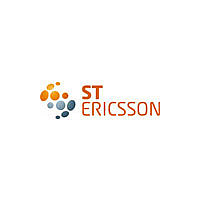ISP1161A1BM ST-Ericsson Inc, ISP1161A1BM Datasheet - Page 128

ISP1161A1BM
Manufacturer Part Number
ISP1161A1BM
Description
IC USB HOST/DEVICE CTRLR 64-LQFP
Manufacturer
ST-Ericsson Inc
Datasheet
1.ISP1161A1BMGA.pdf
(137 pages)
Specifications of ISP1161A1BM
Controller Type
USB 2.0 Controller
Interface
Parallel
Voltage - Supply
3.3V, 5V
Current - Supply
47mA
Operating Temperature
-40°C ~ 85°C
Mounting Type
Surface Mount
Package / Case
64-LQFP
Lead Free Status / RoHS Status
Lead free / RoHS Compliant
Other names
568-1163
ISP1161A1BM,557
ISP1161A1BM,557
Available stocks
Company
Part Number
Manufacturer
Quantity
Price
Company:
Part Number:
ISP1161A1BM
Manufacturer:
NXP
Quantity:
513
Company:
Part Number:
ISP1161A1BMGA
Manufacturer:
EPCOS
Quantity:
6 700
Company:
Part Number:
ISP1161A1BMGA
Manufacturer:
ST-Ericsson Inc
Quantity:
10 000
Company:
Part Number:
ISP1161A1BMUM
Manufacturer:
LUMEX
Quantity:
12 000
Company:
Part Number:
ISP1161A1BMUM
Manufacturer:
ST-Ericsson Inc
Quantity:
10 000
Philips Semiconductors
9397 750 13961
Product data
21.2 Interfacing a ISP1161A1 with a SH7709 RISC processor
21.3 Typical software model
This section shows a typical interface circuit between the ISP1161A1 and a RISC
processor. The Hitachi SH-3 series RISC processor SH7709 is used as the example.
The main ISP1161A1 signals to be taken into consideration for connecting to a
SH7709 RISC processor are:
Remark: SH7709’s system clock input is for reference only. Refer to SH7709’s
specification for its actual use.
The ISP1161A1 can work under either 3.3 V or 5.0 V power supply; however, its
internal core works at 3.3 V. When using 3.3 V as the power supply input, the internal
DC/DC regulator will be bypassed. It is best to connect all four power supply pins
(V
Section
ISP1161A1 the flexibility to be used in an embedded system under either a 3.3 V or a
5 V power supply.
A typical SH7709 interface circuit is shown in
This section shows a typical software requirement for an embedded system that
incorporates the ISP1161A1. The software model for a Digital Still Camera (DSC) is
used as the example for illustration (as shown in
system software are required to make full use of the features in the ISP1161A1: the
•
•
•
•
•
•
•
•
CC
A 16-bit data bus: D[15:0] for the ISP1161A1. The ISP1161A1 is ‘little endian’
compatible.
Two address lines A1 and A0 are needed for a complete addressing of the
ISP1161A1 internal registers:
The CS line is used for chip selection of the ISP1161A1 in a certain address range
of the RISC system. This signal is active LOW.
RD and WR are common read and write signals. These signals are active LOW.
There are two DMA channel standard control lines:
(in each case one channel is used by the HC and the other channel is used by
the DC). These signals have programmable active levels.
Two interrupt lines: INT1 (used by the HC) and INT2 (used by the device
controller). Both have programmable level/edge and polarity (active HIGH or
LOW).
The internal 15 k pull-down resistors are used for the HC’s two USB downstream
ports.
The RESET signal is active LOW.
– A1 = 0 and A0 = 0 will select the Data Port of the Host Controller
– A1 = 0 and A0 = 1 will select the Command Port of the Host Controller
– A1 = 1 and A0 = 0 will select the Data Port of the Device Controller
– A1 = 1 and A0 = 1 will select the Command Port of the Device Controller
– DREQ1 and DACK1
– DREQ2 and DACK2
, V
reg(3.3)
14). All of the ISP1161A1’s I/O pins are 5 V tolerant. This feature allows the
, V
hold1
Rev. 03 — 23 December 2004
and V
hold2
) to the 3.3 V power supply (for more information, see
USB single-chip host and device controller
Figure
Figure
64.
© Koninklijke Philips Electronics N.V. 2004. All rights reserved.
65). Two components of
ISP1161A1
127 of 136
















